|
Such a pretty tea! Hibiscus is one of my favourite herbs to infuse. It's nice to look at, delicious to taste, and makes a super heart healthy drink, too. Add in the rosehips, hawthorn berries, cloves, and orange peels, and we've got ourselves a winner! In need of some herbs? Find them in the shop! Rosehip-Hip-Hip-Hibiscus tea is a healthful tea for several reasons. Let's meet the cast: Rosehips (Rosa spp.) are well known for their high vitamin C content. Although this is true of fresh rosehips, it's unfortunate that much of the vitamin C is lost during the drying process. However, some is better than none! A good quality vitamin C supplement or vitamin C rich foods would be a good addition to your health regimen if this is what you hope to achieve. There is some information regarding rosehip benefits regarding heart health and seasonal sickness, but more research needs to be done. Hibiscus (Hibiscus rosa-sinensis) is what turns the tea into that gorgeous pink colour. Its flavour is a bit tart, but it's a pleasant taste most people love! Not only is it eye candy, hibiscus is thought to be heart healthy, helping to lower blood pressure and aid in weight loss. Hawthorn (Craetagus spp.) might just be one of the best known and widely celebrated heart tonics out there. Though it's thought that a tincture of the berry, leaf and blossom are the absolute best way to get everything out of the hawthorn tree, berries tend to be used the most in formulas. Hawthorn berries have a safe, general action on the cardiovascular system, opening up heart vessels, strengthening and regulating the heartbeat, and balancing out blood pressure and cholesterol. Clove and orange peel, though they are wonderful and beneficial on their own, are in such minute quantities here that they are mostly for taste. Rosehip-Hip-Hip-Hibiscus Tea Ingredients: 1 tsp rosehips (cut and sifted, seedless if possible) 1 tsp hawthorn berries 1 tsp hibiscus blossoms 2 whole cloves 1 tsp orange zest, or to taste squeeze of orange juice (optional) Need any herbs? Visit the shop! Method: 1. Put all the ingredients into a small saucepan over medium-high heat. 2. Add 1.5 cups of water. 3. Bring to a boil and simmer. You'll simmer it for about 15-20 minutes. 4. Keep an eye on the water level. After about 15-20 minutes, the water level should have dropped to around 1 cup. At this point, filter the decoction into your mug. Sweeten to taste (I suggest honey! Yum!). Enjoy! One final note...the title of this blog is Rosehip-Hip-Hip-Hibiscus Tea. This is a LIE! The process of simmering herbs to reduce the water is not a tea or infusion at all. It's a decoction. A decoction is mainly used with tough herb parts such as bark, twigs, seeds or hard berries like hawthorn. It gets the absolute most out of the herbs in a way that an infusion simply couldn't. ** This is fun, right?! And that's all it is for now. Information on the traditional uses and properties of herbs in this website are for educational use only, and are not to be mistaken for medical advice. Every attempt has been made for accuracy, but none is guaranteed. Many traditional uses and properties of herbs have not been validated by the FDA or Health Canada. If you have health issues, concerns, or questions, consult your health care practitioner. **
Here's more info: https://www.anniesremedy.com/crataegus-monogyna-hawthorn-berry.php https://www.webmd.com/vitamins/ai/ingredientmono-527/hawthorn https://www.anniesremedy.com/hibiscus-sabdariffa.php https://www.webmd.com/vitamins/ai/ingredientmono-839/rose-hip
1 Comment
If I were to put all my loves in order of preference, chocolate truffles and herbal concoctions would be very, very high on the list. Herbal infused chocolate truffles?! I can't even count that high on the preference list! My husband is also a personal favourite of mine. I'd put him right up there with the truffles...a solid third place, for sure! I jest, of course, but all three together at once definitely calls for a celebration. These truffles are not just your basic, run of the mill chocolate delicacies. The base of cream and quality chocolate, dipped in a shell of more chocolate is what makes truffles so sinfully delicious - the texture is out of this world. There's the snap of chocolate shell, then the soft richness of the ganache that melts in your mouth and teases your taste buds. Herbal infused...now there's the next level up. I used damiana, rose, ginger, and juniper berries. You can find rose and damiana in my shop. Why these herbs? My aim was a truffle perfect for Valentine's Day. Damiana and rose rank quite high on the list for aphrodisiac herbs. Historically, damiana was first used in Mexico by women, who drank it as a tea before lovemaking, and by the Mayans and Aztecs as a sexual stimulant. It has since been used as an aphrodisiac for men and women. Rose is a well known romancing flower, of which bouquets are given between lovers at Valentine's Day, anniversaries, birthdays, and 'Please forgive me!' days. Therapeutically, though, it is not only thought to promote feelings of relaxation and desire, it is also used for male reproductive health by herbalists. Its soft, subtle flavour complements the earthy, slightly bitter taste of damiana very well. Ginger is added partly for taste, but also for its reputation as an aphrodisiac. It is not as well known for this purpose as damiana and rose, but its scent and effect on the circulatory system place it on the 'must have' herb list. Juniper, though not strictly an aphrodisiac, is beneficial to the urinary tract, and adds a pleasant taste to the mix. Making the truffles will take very little actual work, but there is a certain amount of down time when you'll need to infuse, cool, freeze, etc. A quiet evening at home is the perfect opportunity. Lovers' Rose and Damiana Truffles 20 oz dark chocolate, chopped finely. I used 65%, but feel free to use darker/lighter as per taste 250 ml heavy cream 1 Tbsp grated ginger .5 oz damiana herb .5 oz rose petals from a reputable source. Flowers from florists are usually sprayed. 1 Tbsp juniper berries Need an herb? Visit my shop!  Method: 1. Place the herbs and cream in a small pot. It will seem like there is too much herb and too little cream, but trust the process! Adjust the heat to medium-high. As soon as the cream begins to boil, remove the pot from the heat, cover, and allow to infuse for 15 minutes. 2. While the herbs are infusing, finely chop the chocolate. Place 8 oz of chocolate into a medium sized heat proof bowl. After the 15 minutes are up, strain the cream through a fine sieve, and pour it into the chocolate. Press the herbs well to get every bit of cream out, but be quick about it...the cream needs to be hot when poured into the chocolate. Compost the herbs. 3. Mix the chocolate and cream well until the chocolate is completely melted. Once smooth, put it into the freezer. Check on it every 10 minutes, stirring to keep it evenly hard. When the chocolate has hardened enough that you can roll it into little balls, its ready. 4. For this step you may want to keep a bowl of ice water and a towel handy. Cold hands will make this process much easier as your body heat will melt the ganache very quickly. Roll the chocolate into uniform 1 inch balls and place them on a cold plate or baking sheet. Return them to the refrigerator to set (about 20 minutes). 5. While the balls are setting, prepare to melt the remaining chocolate in a double boiler. If you don't have one, it's very easy to DIY. Place the chocolate in a heatproof bowl over a small pot of water in which you've added a couple inches of water. Bring the water to a simmer. The heat from the boiling water will warm the bowl enough to melt the chocolate without the risk of burning it. In the meantime, melt the remaining chocolate in a small double-boiler. 6. Take the chocolate balls from the refrigerator and reshape them if needed. With a toothpick or fork, dip the balls one by one into the melted chocolate. Do so quickly so as not to let them melt. Let the excess chocolate drip off and place the covered truffle onto a cold plate. 7. While the chocolate is still warm, sprinkle the truffle with crumpled rose petals or icing sugar. Allow to set. 8. These are best kept in the fridge. Enjoy This recipe was adapted from Urban Moonshine's webpage. As tasty and fun as these truffles are to make (and eat!), they are to be eaten as a treat. Although tradition and herbal studies have labeled these herbs as 'romance' herbs, each situation is different and should be evaluated by a professional well educated in such matters. It is possible to be allergic to any type of food. Be mindful of your own tolerances. It must be said that this recipe is not intended to diagnose, treat or otherwise be seen as a remedy. Please consult your health care provider or herbalist for health issues and health advice. I love me a good shrub. 😍 For years I started my mornings with lemon water, but then I discovered shrubs. That was it for me! Although I was familiar with oxymels (honey and vinegar infused with herbs), I had never had exposure to shrubs (same as an oxymel, basically, but with the addition of fruit). My first try was with Radicle Root Herbs Heart Opener Shrub. Delicious! For those in the area who want a ready made shrub, hit them up. They have several flavours. If you're feeling adventurous, you can try making your own. This recipe is a modification of Rosalee de la Foret 's shrub. I had no mandarins, so I used oranges. I added an extra bit of clove and spruce, as I like things spicy. Orange Spruce Shrub 2 oranges 2 inch cinnamon stick 6-7 whole cloves 2-3 sprigs spruce 5-6 star anise 1/3 cup Hawthorne berries 1/2 cup raw honey (I used my dad's 😊) Apple cider vinegar to fill (unfiltered, unpasteurized, at least 5% acidity) Place fruit and herbs in a clean mason jar. Add the honey, then the vinegar to fill.  The herbs should be covered. If not, add a bit more vinegar. Cap with a non metal cover (I place a plastic film barrier between the vinegar and the lid). Don't forget to label it! I write the recipe on the jar. This allows for tweaking or duplicating in the future. Keep in a cool, dark cupboard for 1-2 weeks, shaking daily. Strain into a clean jar and keep in the fridge for up to 6 months. I like starting my day with a splash of shrub in water. It's also delicious in sparkling water, cocktails, or mixed with oil for a vinaigrette.
Enjoy! *This paper was originally written for my course work while gaining my certification in Clinical Herbalism with the school Naturally Healthy, Calhoun, LA. It was written in 2013 and reflects my study at the time.*
Echinacea is a popular and much used herb. It is celebrated for its antiviral, antibacterial and immune-enhancing properties. Echinacea was especially popular in the 18th and 19th century, but its use declined in the United States with the discovery of antibiotics. We are seeing a resurgence of its use in the Americas, although its popularity never waned in Europe, especially Germany. Most of the research on Echinacea has been carried out in Germany, with favourable results. American studies have not been as positive, but these studies have been criticised. Apparently, the American studies were not properly controlled, making no account for the quality of Echinacea product tested, nor the parts of the plant or even the species of Echinacea used. There are three main Echinacea species used in medicine – Echinacea purpurea, Echinacea angustifolia and Echinacea pallida. Echinacea spp in general is immunostimulatory, anti-inflammatory, anti-bacterial and vulnerary. However, each of the three species of Echinacea have slightly different properties. The roots and tops of E. angustifolia and E. purpurea and the tops of E. pallida contain alkylamides (stimulates airway macrophages and the production of cytokines to help fight off infection). E. Purpurea contains chicoric acid (stimulates phagocystosis), and E. angustifolia contains quite a bit more echinacoside (anti-inflammatory and encourages wound healing) than the other two species. The three Echinceas compliment each other. It is therefore recommended to use a treatment that includes Echinacea purpurea, Echinacea pallida and Echinacea angustifolia. There have been issues with treatments being labelled incorrectly, and strengths of the herb varying considerably from product to product. It is wise to purchase Echinacea spp (and all herbs) from a reputable dealer.  *This paper was originally written in 2013 for my course work while earning my certificate in Clinical Herbalism with the school Naturally Healthy in Calhoun, LA. It reflects my research at that time.* Dr. Sidney V. and Merrill P. Haas are credited with the development of the Specific Carbohydrate Diet, and biochemist Elaine Gottschall is credited with its popularization and modernization. Gottschall’s daughter suffered from colitis, and at age 5, the Gottschalls brought her to the Drs. Haas. The Drs. Haas had written a book entitled Management of Celiac Disease and had been treating people with digestion issues through diet. Dr. Gottschall’s daughter began a radical version of the Haas’ diet, and within 2 years was symptom free. Several years later the little girl returned to a normal diet and was still enjoying good health two decades later. The Specific Carbohydrate Diet (SCD) is a grain-free, lactose-free and sucrose-free meal plan. It resembles the popular gluten-free diet, but is quite a bit more restrictive. According to Gottschall, people suffering of ulcerative colitis, Crohn’s disease, celiac disease, diverticulitis, chronic diarrhea and even certain serious behaviour problems and mental issues such as epilepsy, schizophrenia, mental confusion, autism and bizarre behaviours could be healed through the SCD. The Specific Carbohydrate Diet is built on the premise that these diseases are caused by injuries to the digestive tract. In a nutshell, it is believed that undigested foods which remain in the colon can ferment. This fermentation upsets the delicate flora of the gut and produces a ripe environment for a buildup of microbes, whose waste is harmful to the system. This bacterial overgrowth can lead to bloating, gas and chronic diarrhea, which in turn causes injury to the small intestinal mucosa. Over time the microvilli which line the intestine can become damaged, and blunted. The body will then produce an excess of mucus to protect itself. This further complicates things by making carbohydrate absorption even more difficult….which brings us back to the beginning of the vicious cycle where those carbohydrates will sit in the digestive tract and further feed the offending microbes. *Source: http://btvc.webfactional.com/p/autism-gi-problems/ The result of this injury to the digestive tract is often serious digestive issues, such as Crohn’s disease, ulcerative colitis, etc. The effects may be even further reaching, however. A waste product of the microbes is D-lactic acid. It is thought that D-lactic acid and other toxic products from these bacteria can enter the brain and “poison” brain cells. It has been noted that many people suffering from Schizophrenia, for example, also have digestive issues. Although D-lactic acid can be managed with antibiotics, it is more effective to prevent its formation by cutting off the microbes’ energy source, thus starving it out. It was noticed that when patients suffering of both digestive and mental issues tried the Specific Carbohydrate Diet, the mental diseases actually began to clear up first, followed by the digestive problems. The Specific Carbohydrate Diet is a very restrictive meal plan. Gottschall states, “the strictness of this diet cannot be overemphasized nor should the difficulty of adhering to it be minimized…such infringements (allowing a taste of a forbidden food) will seriously delay recovery and it is unwise to undertake this regimen unless you are willing to follow it with fanatical adherence.” (Gottschall, p 50) The SCD absolutely prohibits sugar, molasses, fructose, corn syrup or any other processed sugar, canned fruits and vegetables, all grains, including rice, corn, wheat, spelt, and others, some legumes, starchy tubers like potatoes, yams and parsnips, seaweeds and seaweed by-products, canned and processed meats, milk and milk products containing lactose, bread, pasta, starchy foods, canola oil, commercial mayonnaise, chocolate, carob, margarine, commercial condiments, any products with FOS, and much more! Surprisingly this does leave some foods which are permitted. The SCD follower can consume unprocessed meats, poultry, fish, shellfish, eggs, honey , vegetables (fresh, frozen, raw or cooked), some legumes, unroasted cashews, peanuts in a shell, all-natural peanut butter, certain cheeses, homemade yogurt (fermented for at least 24 hours), certain fruits, some oils, tea, coffee, vinegars and juices with no additives. A complete list can be obtained in Gotschall’s book “Breaking the Vicious Cycle”. Gottschall recommends trying it for one month. Improvement should be noticed by then. If so, she advises to continue for at least a year. Once the symptoms have completely disappeared, another year should be added on to ensure that the gut is healed. At this point, many people are able to live symptom free and enjoy a normal diet once again, although it is hoped that one would not return to a high-processed, high-sugar lifestyle. The Specific Carbohydrate Diet has mixed reviews. It is not an easy diet to follow. It is incredibly restrictive, and does not tolerate any cheating. It requires a good amount of thinking ahead, prepping and planning to be sure that nutritional needs are being met. Even with careful planning, Gottschall ascertains that the diet could leave a person lacking in certain nutrients. For this reason, she recommends supplementing with a multi-vitamin (starch, sugar and yeast free). For those living in the north or who don’t get outside much, vitamin D and vitamin A are recommended as well, preferably through a cod-liver or halibut oil. Special attention should be given to vitamin B12 and minerals, too. Gottschall recommends being followed by your doctor through lab tests to be sure deficiencies are dealt with promptly. She also cautions not to discontinue medications without your doctor’s approval, although they may need to be adjusted as your condition improves. The SCD does not include any grains whatsoever. This could lead to problems because grains are an important source of fibre, minerals, and vitamins. It must be said, though, that the Specific Carbohydrate Diet is not a diet for everyone. It is specifically tailored to people who have digestion issues and whose gut is damaged through the ingestion of certain foods, of which grains is one of them. The same applies to sugars. The body does need sugar; there’s no question of that. However if one’s body is weakened and damaged through the eating of a certain kind of sugar (such as lactose, or disaccharides), eliminating it would have more pros than cons. As Gottschall outlines in her book, no food should be ingested that the body cannot properly digest. The Specific Carbohydrate Diet is not meant to be a lifelong therapeutic diet. It is meant to give the sick body a break from offending foods so that healing can take place and a normal lifestyle can resume. It is not a diet for everyone. It should be seen as an emergency measure, and not as a weight loss fad. From a Biblical perspective, the Specific Carbohydrate Diet seems to fall into a neutral zone. The SCD does not make claims or promises of any kind and does not hail itself as a healing force. Although SC Dieters would miss out on the blessings of bread and milk, this would only be temporary. After healing has taken place, one would be free once again to partake in the full range of wonderful and nutritious foods God has provided us. I would not recommend the Specific Carbohydrate Diet to the average person. The difficulty in following the diet correctly, coupled with the potential for nutritional deficiencies, would be cause enough for me to hesitate. However desperate times call for desperate measures. Should my client suffer from a serious digestive disease and not have seen improvement from anywhere else, I would certainly suggest the Specific Carbohydrate Diet. I would be very careful to explain the ins and outs of the diet in detail and urge them to be closely followed to keep an eye on vitamin and mineral levels. Once the symptoms had cleared, and the specified amount of time passed, I would encourage them to try a balanced diet low in sugar, processed foods, and moderate in grains to see how their body tolerates it. Sources: Gottschall B.A., M.Sc., Elaine, Breaking the Vicious Cycle, Kirkton Press, Baltimore ON, 1999 http://www.ccfa.org/resources/specific-carbohydrate-diet.html http://altmedicine.about.com/od/popularhealthdiets/a/specific_carb.htm http://btvc.webfactional.com/p/autism-gi-problems/ School is just about to start, and so are the anxious tummies. I made up a child friendly glycerite that's both safe and effective to tame tummies and lower anxiety.
Want to learn more? Sign up for our September workshop at Mother Nature's Market in Woodstock, New Brunswick. Join us for an evening session to explore: *kid-friendly, anxiety busting herbs *natural tips and tricks to bring calming *making a herbal glycerite to calm and soothe upset tummies *preparing and tasting a kid friendly herbal tea Cost: $20 Spaces are limited. Please reserve your spot in advance by stopping by the store (Mother Nature's Market, 618 Main Street), calling 328-1815, or message me! Plants are all around us...but what are they, and what are they good for? If you've ever wondered what all those weeds are (and I use the word 'weed' very tongue in cheek), why they matter, and how to use them, you'll want to join us on an Herb-an Discovery Walk through Woodstock's downtown! I'll accompany you as you:
*meet dozens of plants *discuss their traditional and therapeutic uses *taste some delicious (and maybe not so delicious) weeds *learn the basics of wildcrafting WHEN: Thursday, July 25 from 6-8 pm WHERE: Mother Nature's Market, 618 Main St. Woodstock, NB COST: $15. Payment at Mother Nature's Market will reserve your spot. Space is limited! Though this walk covers only a few blocks, it is recommended to dress for the weather and wear comfortable footwear. Children must be accompanied and supervised by a parent. Follow this link for more info: https://www.facebook.com/events/2326790077539022/ Every winter I mix up a fresh batch of ear oil just in case one of us happens to come down with a case of otitis. Ear pain is miserable, and it's worth it to keep this easy remedy on hand. It's very simple to make. I include garlic, mullein, calendula and St John's wort oil in my recipe. If you're lacking all those herbs, you can make an effective ear oil with simply garlic and mullein (and even just garlic). Herbal Ear Oil 2 TBSP chopped garlic 2 TBSP calendula (dry) 2 TBSP mullein (dry, though wilted is acceptable) 2 TBSP St John's wort oil (made ahead with fresh herb) Olive oil Put the herbs and St John's wort oil in a 250 ml jar. Add olive oil to the top of the jar (see the 2nd pic? That's not enough. The 3rd pic? That's the stuff, right there.). Cap it. Label it. Place it in a warm, sunny spot for a minimum of 2 weeks, shaking it every day. Keep an eye that mold doesn't form in the jar. This can happen if the herbs were not dried or stored properly. If that happens, chuck it. At the end of the 2 weeks, strain it and bottle it. A dropper bottle will make it easier to dispense it.
To use, warm the oil until it's at body temperature. Test it to be sure it isn't hot....earaches are bad enough without a burn! Put 2 or 3 drops into the ear canal, treating both ears as infections can 'travel'. Use 2 to 3 times daily as needed. You may want to clean out the oil every so often with a couple drops of topical hydrogen peroxide. Ear oil is NOT to be used for swimmer's ear or if the ear drum has been perforated. If in doubt or if the ear pain persists or worsens, see your doctor. Yes, it's another unflattering picture, but it's real and it has significance...two things I love. I have become an early riser. I love the quiet as I sip my coffee, daydream and organize my thoughts. The hour to myself before the kids wake is such therapy! Lately, my early morning thoughts have gone toward my emotional progess. I am very much a person who fixes. There was a time I struggled ...with a saviour mentality. Hard times? World poverty? Second cousin twice removed had surgery? Emilie to the rescue! My thoughts and behaviours, trying to be everything to everyone, running ragged to solve problems as big as maternal death in the Phillipines and as small as a friend's rocky marriage left me exhausted mentally and physically. Burnout after burnout left me in shambles. So I stopped. I am able to recognize my level of energy reserves. I am able to recognize my abilities in a realistic way.
I have the desire to take care of everything and everyone, but I now have the sense to say no and feel okay with it. Saying no to some responsibilities has given me the ability to do well in others. For the New Year, choose one task that is suited to you and do it well. If you hate cooking and crowds make you anxious, don't volunteer in a soup kitchen. Let that be another's blessing. Perhaps you'd be better suited to helping the soup kitchen by doing administrative work or cleaning the hall after events. Don't fight who you are. We've all been made differently not to compete, but to compliment each other. 2019 roared in with freezing rain and a heavy snowstorm. Mid-afternoon it finally cleared up and I took my cabin-fevered self out for a snowshoe. Thankfully, I took the loop trail that keeps close to our property rather than hiking far across the fields. The moment I hit my groove and thought I'd shoe to the far fields out of sight of our house, the wind changed. I saw it coming from the far woods like a tidal wave and it hit me with ice pellets as soon as I landed in our... back yard. Winter is tempermental in our area.
I took this picture as I retraced my steps on the loop. I suppose it is fitting to look back on 2018 and learn from the successes and hardships. Where have I been? More importantly, where am I going? I have big ideas for Village Sage Herbals! |
Emilie
Clinical herbalist. Mother. Teacher. Ever student. Archives
February 2022
Categories
All
|

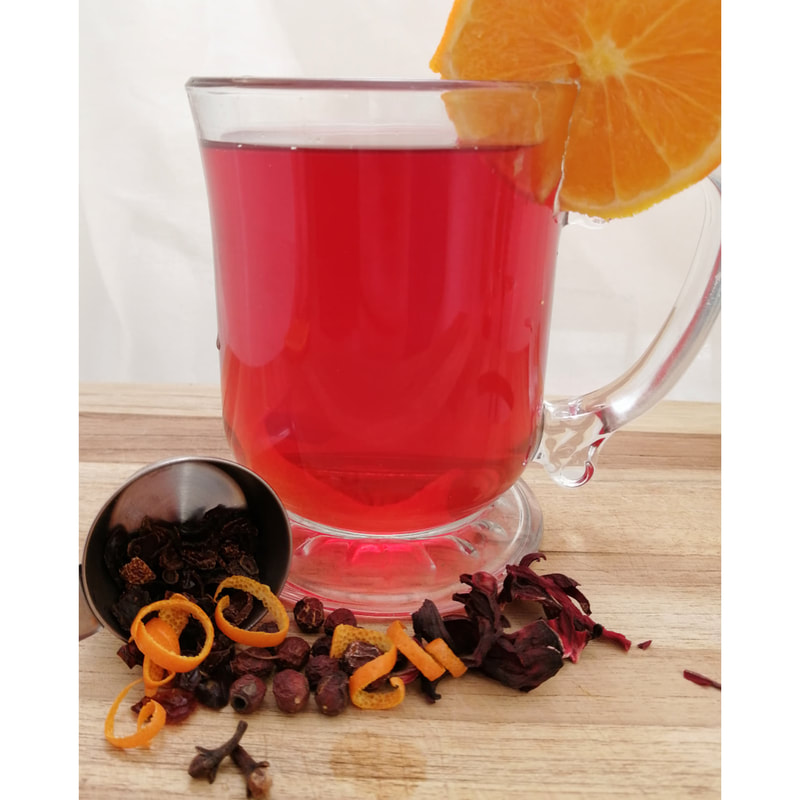
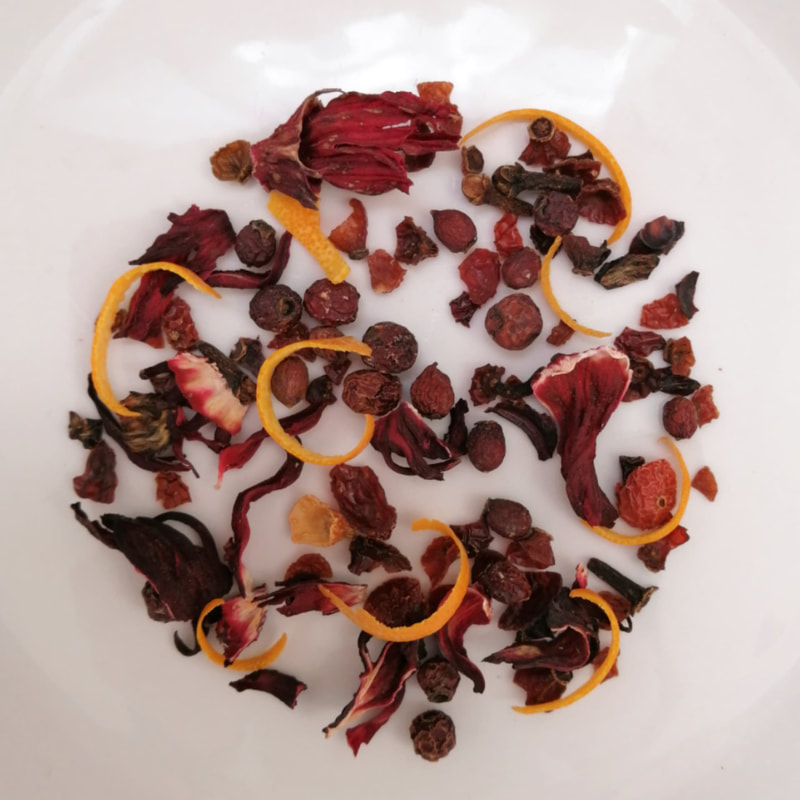
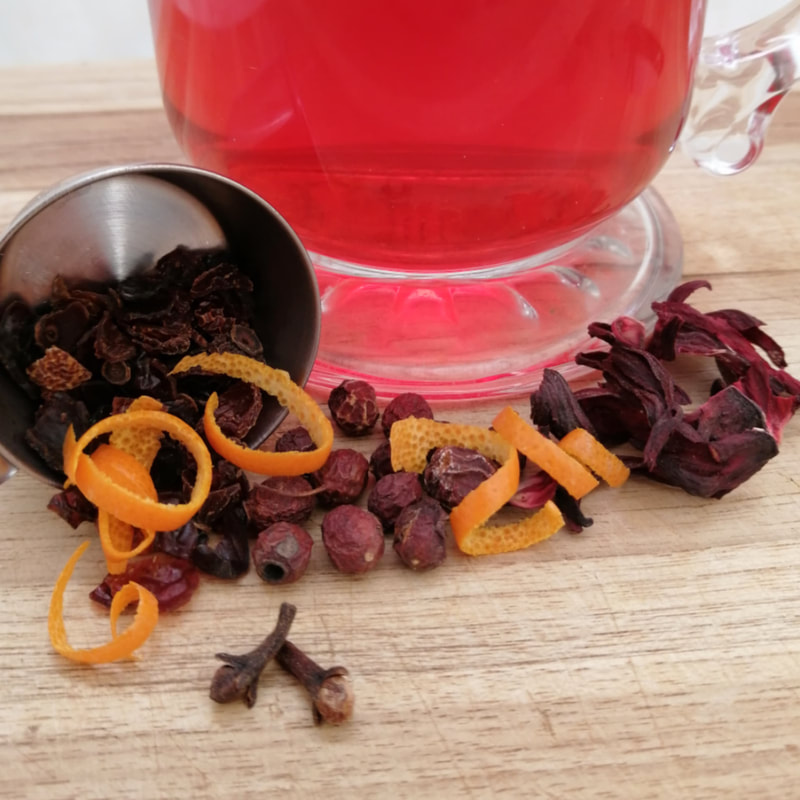

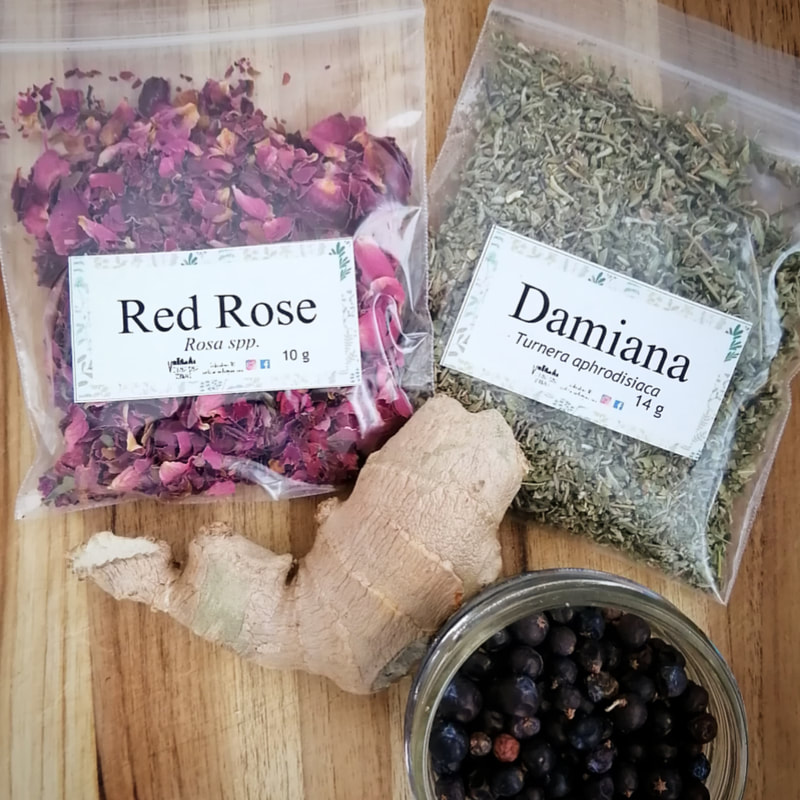
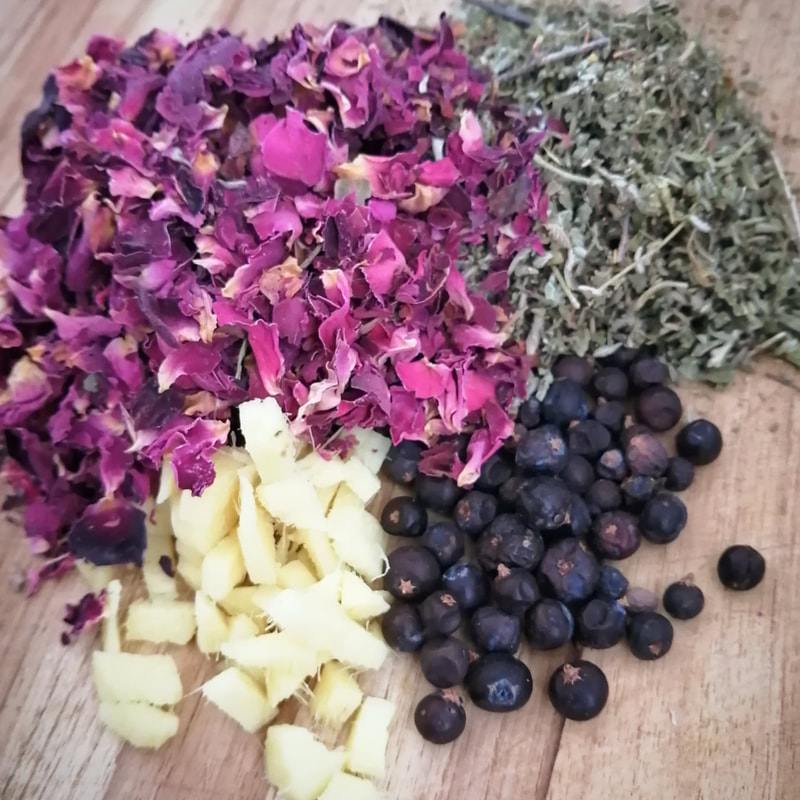
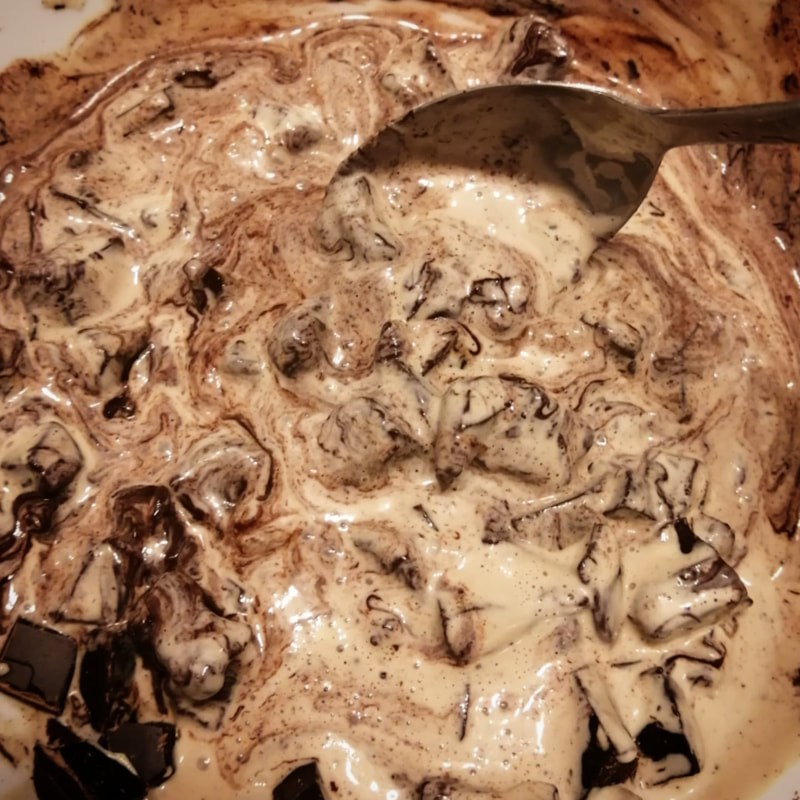
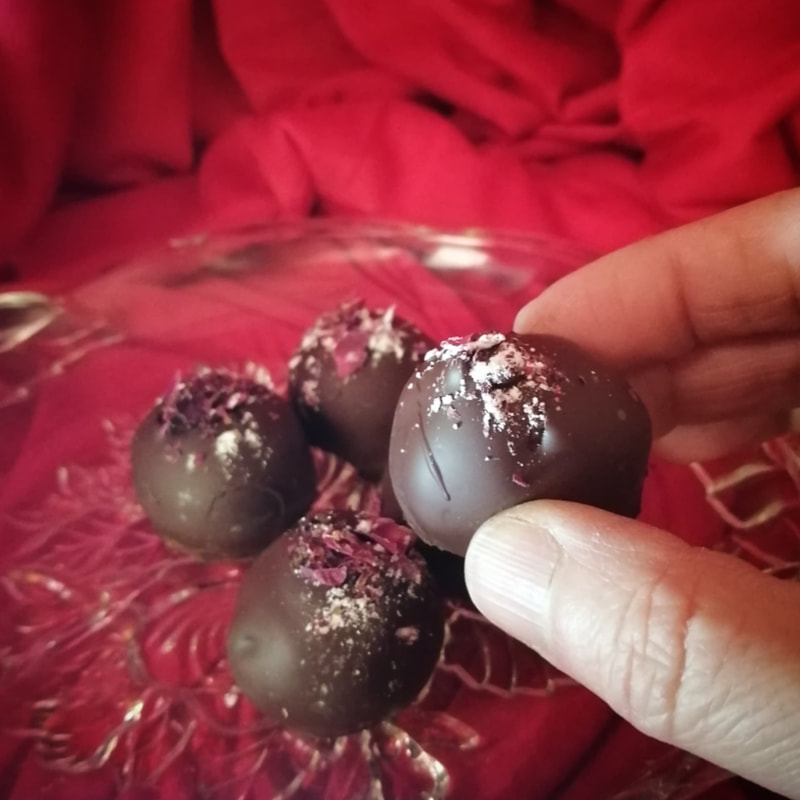

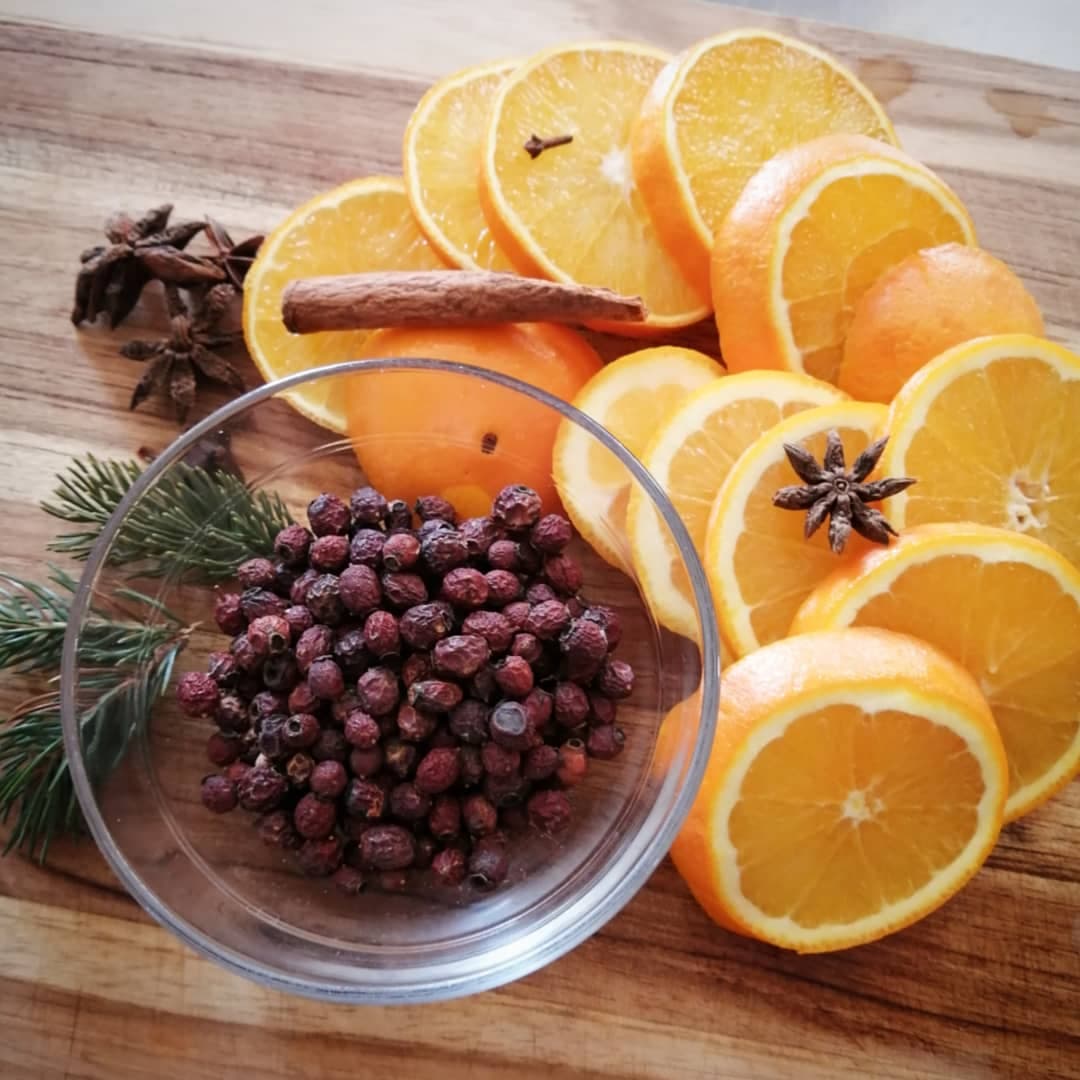

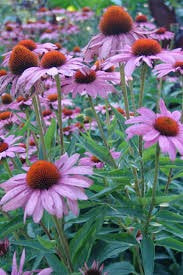


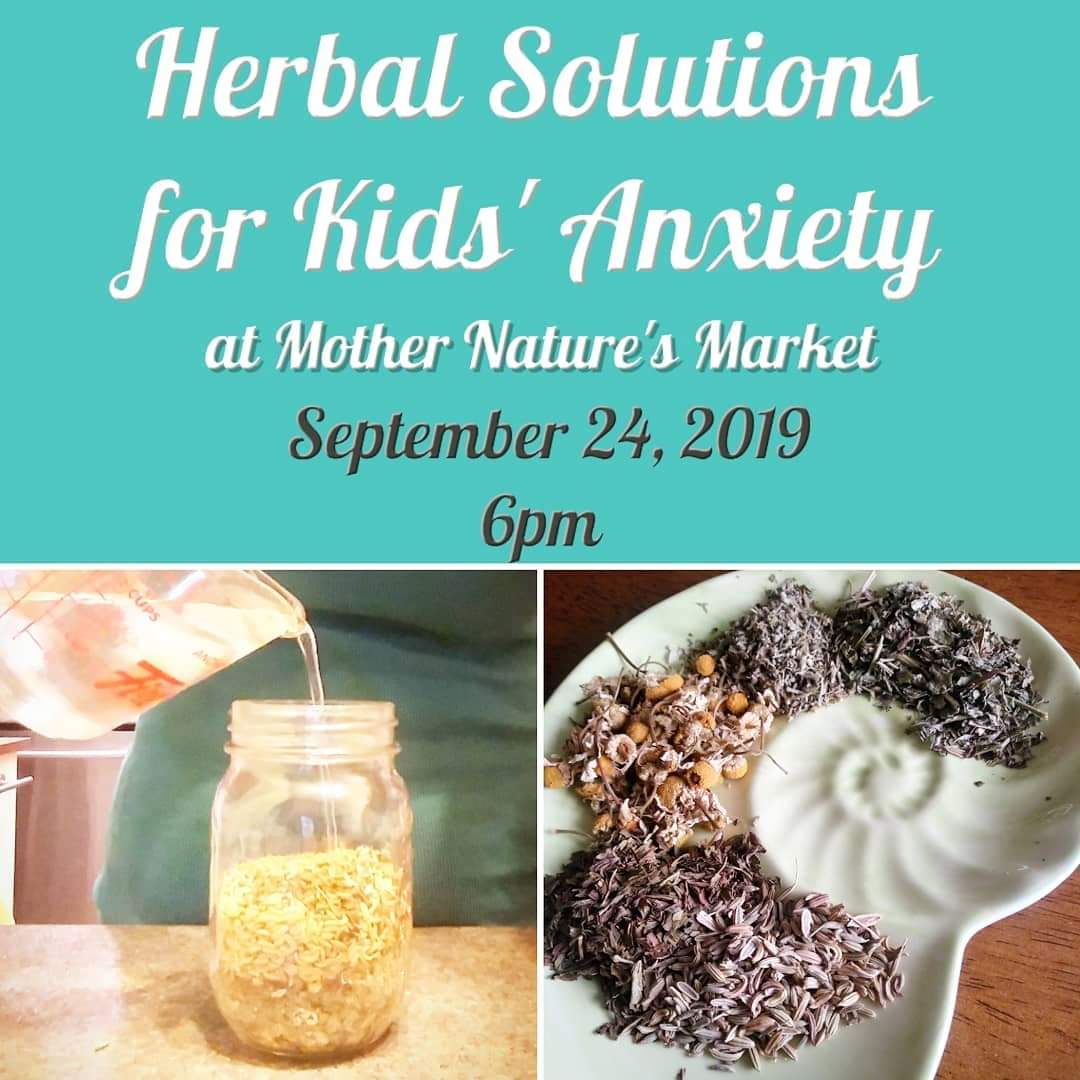

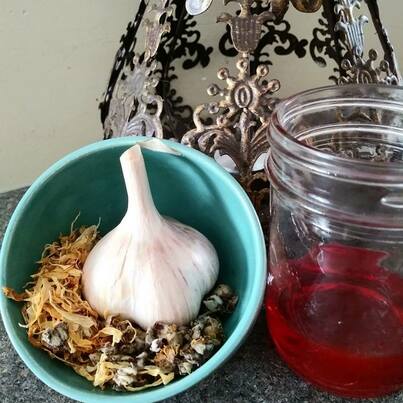

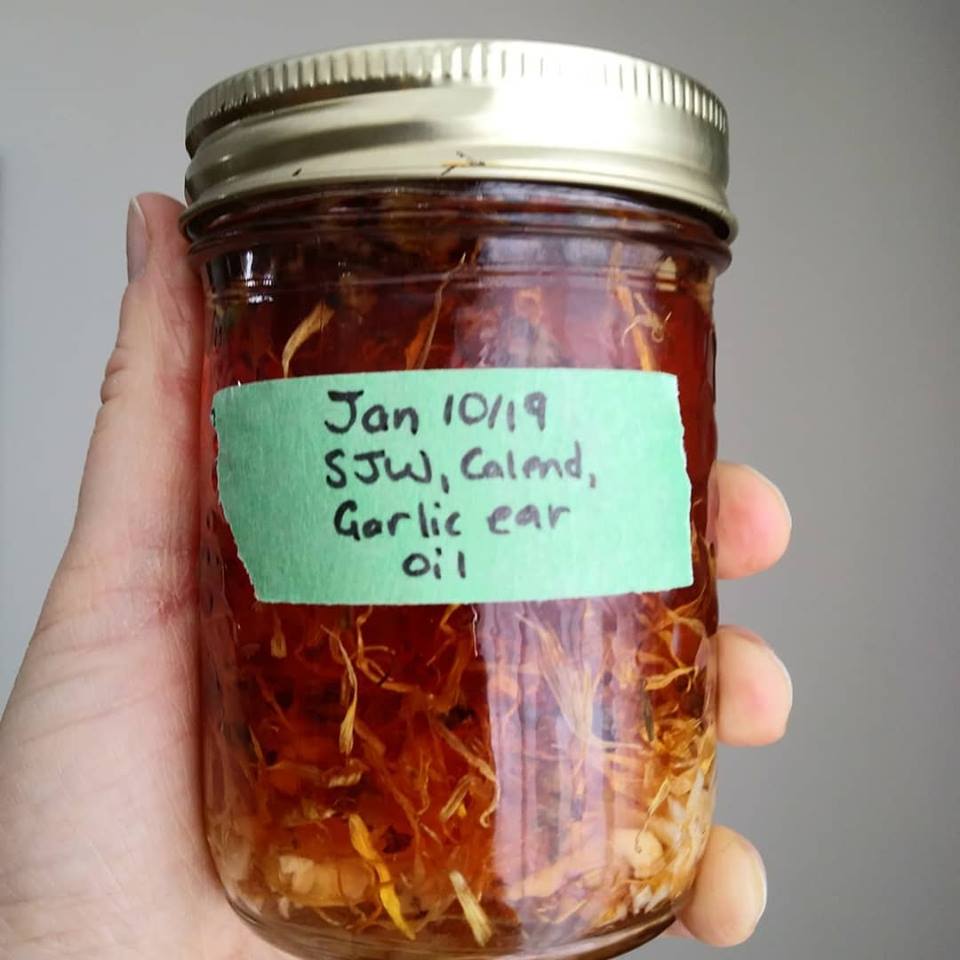


 RSS Feed
RSS Feed